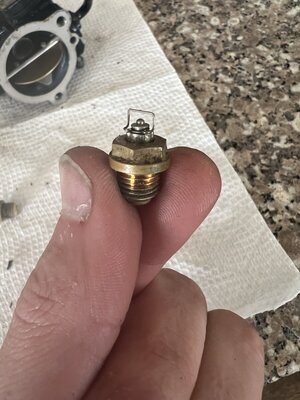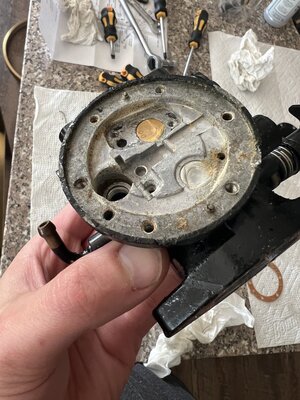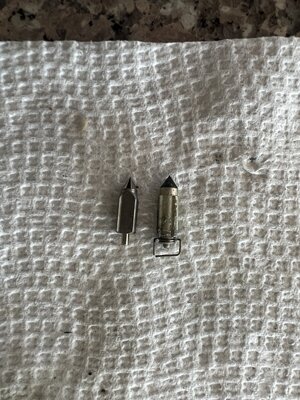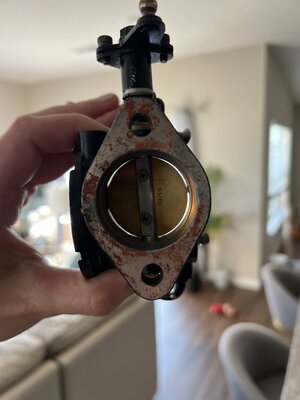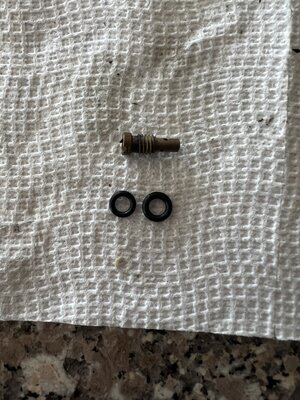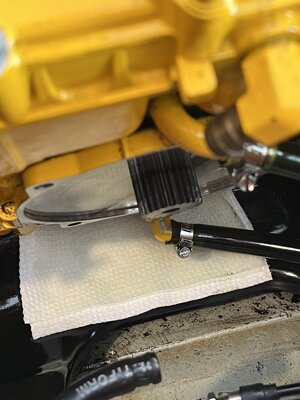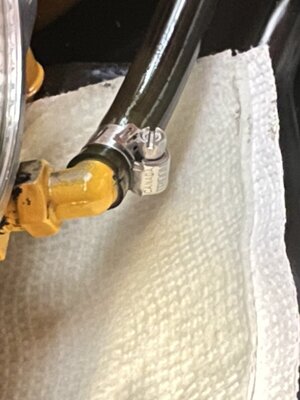nickandrisin
Member
Update:
The Sea-Doo is at the point where it will start right up and run whenever with no problems. I haven't gotten a chance to take the battery in for a load test yet, but it's next on my list.
I took the Sea-Doo to the lake yesterday to see how it performs on the water. I started it before heading to the lake, and I started it before dropping it into the water. Once I was in the water, it did not want to start as easily. It took about 30-45 minutes to get it started and to get it to stay started. I later learned this is because it does not want to idle in water. During a majority of the starts, occasionally I would hear a 'whirring' noise, kind of winding down, at the end of the Sea-Doo trying to start (starter?).
I was only able to get it running if I gave it plenty of throttle while cranking and immediately after. It will not idle in water, but it will idle on trailer fine. Do I need to adjust my idle speed screw? Once it's running and I'm feathering the throttle it performs fine. I can go full-throttle no problem and run it until I run out of room.
Anytime that it stalled out from too little throttle, it would take a few attempts to get it started again. Call me crazy, but it seemed like I could only get it started again if I switched which fuel line I was using between ON/RES. If I stalled out on ON, then I had to switch to RES, pump throttle 5 times, then start it up. If I stalled on RES, I had to switch to ON, pump 5 times, then it would start.
Ideas on where to move forward next? Does the starter need looked at? Do I need to adjust my idle speed? What's up with the fuel delivery?
Thanks!
The Sea-Doo is at the point where it will start right up and run whenever with no problems. I haven't gotten a chance to take the battery in for a load test yet, but it's next on my list.
I took the Sea-Doo to the lake yesterday to see how it performs on the water. I started it before heading to the lake, and I started it before dropping it into the water. Once I was in the water, it did not want to start as easily. It took about 30-45 minutes to get it started and to get it to stay started. I later learned this is because it does not want to idle in water. During a majority of the starts, occasionally I would hear a 'whirring' noise, kind of winding down, at the end of the Sea-Doo trying to start (starter?).
I was only able to get it running if I gave it plenty of throttle while cranking and immediately after. It will not idle in water, but it will idle on trailer fine. Do I need to adjust my idle speed screw? Once it's running and I'm feathering the throttle it performs fine. I can go full-throttle no problem and run it until I run out of room.
Anytime that it stalled out from too little throttle, it would take a few attempts to get it started again. Call me crazy, but it seemed like I could only get it started again if I switched which fuel line I was using between ON/RES. If I stalled out on ON, then I had to switch to RES, pump throttle 5 times, then start it up. If I stalled on RES, I had to switch to ON, pump 5 times, then it would start.
Ideas on where to move forward next? Does the starter need looked at? Do I need to adjust my idle speed? What's up with the fuel delivery?
Thanks!
Last edited:




